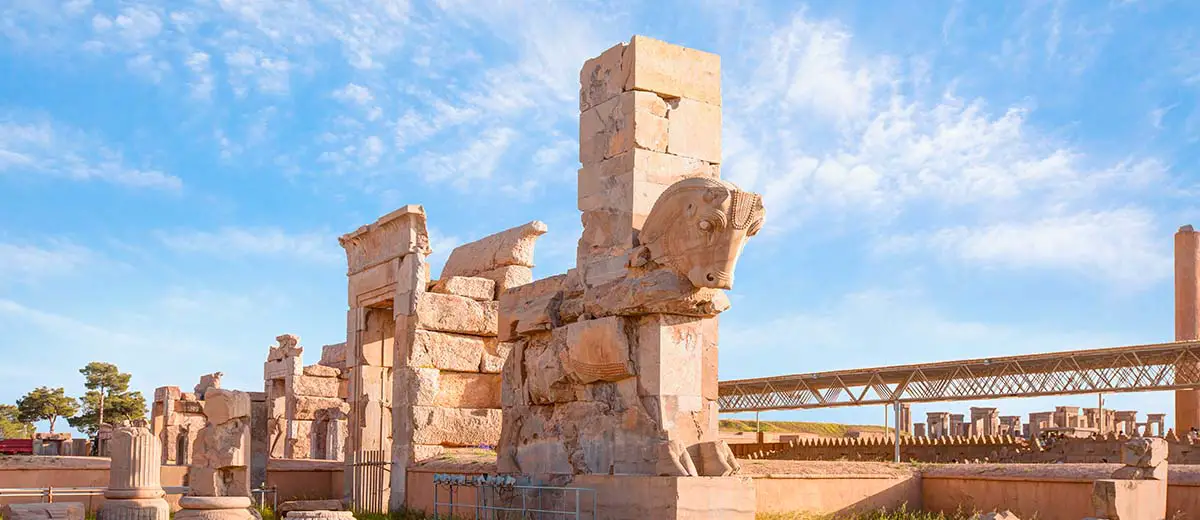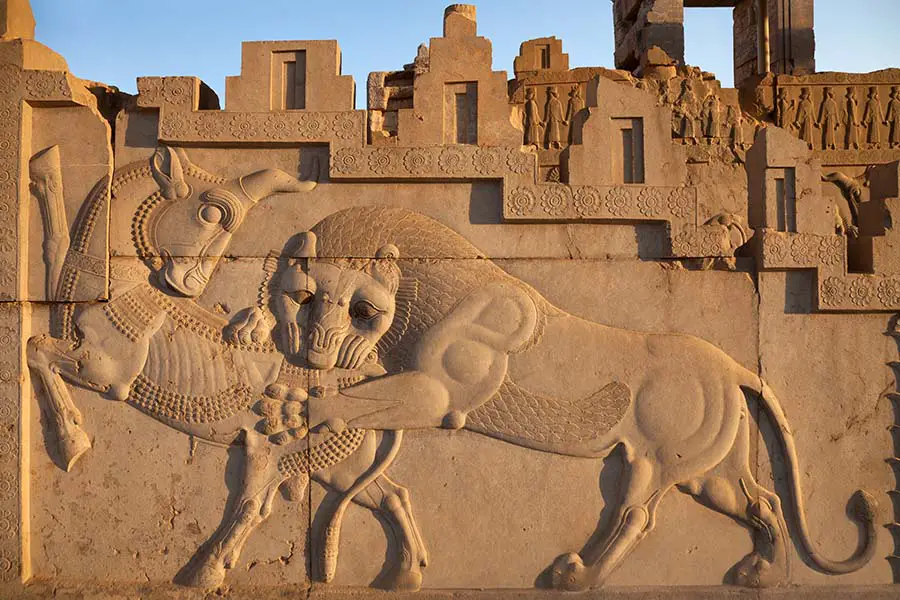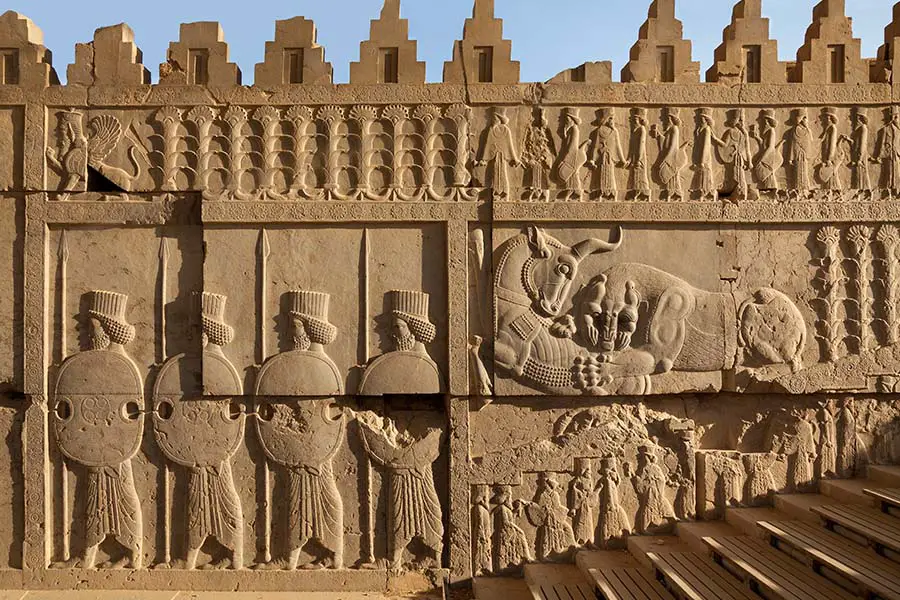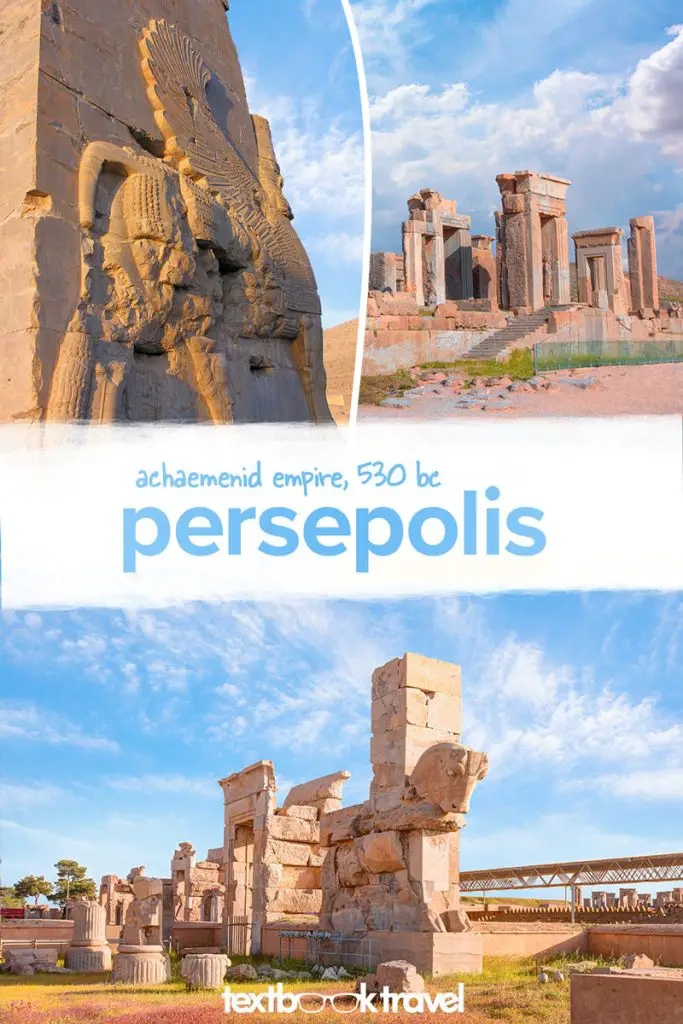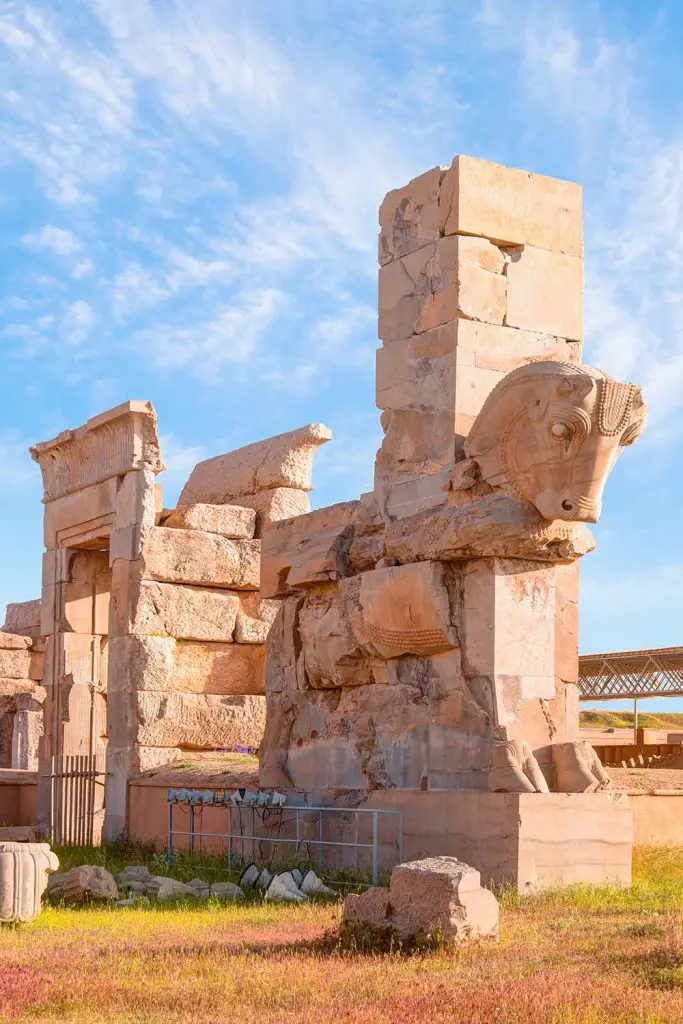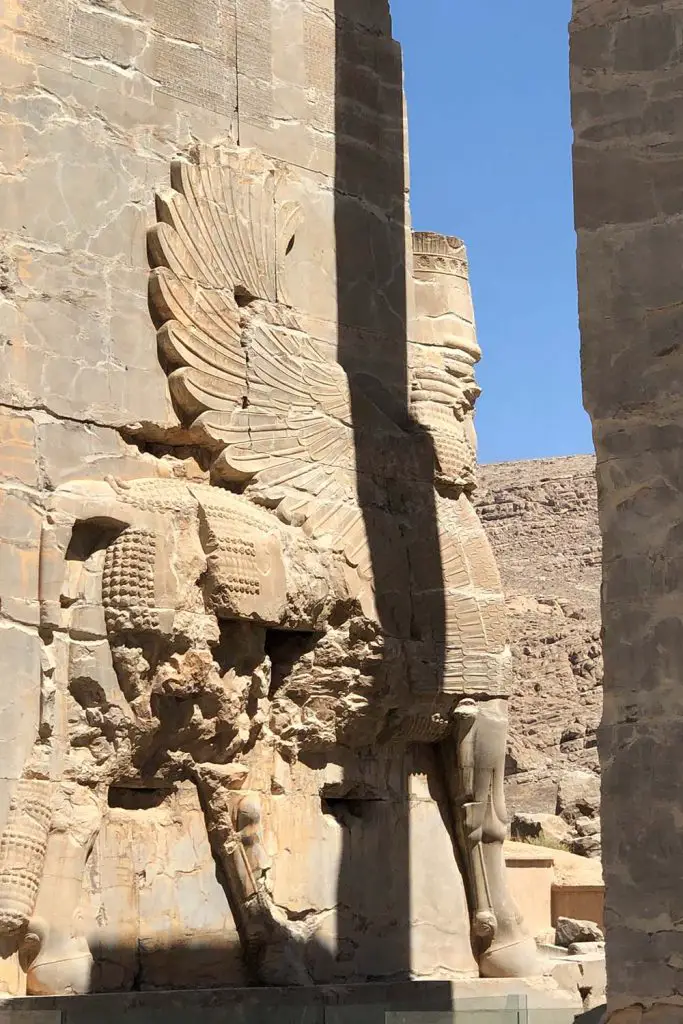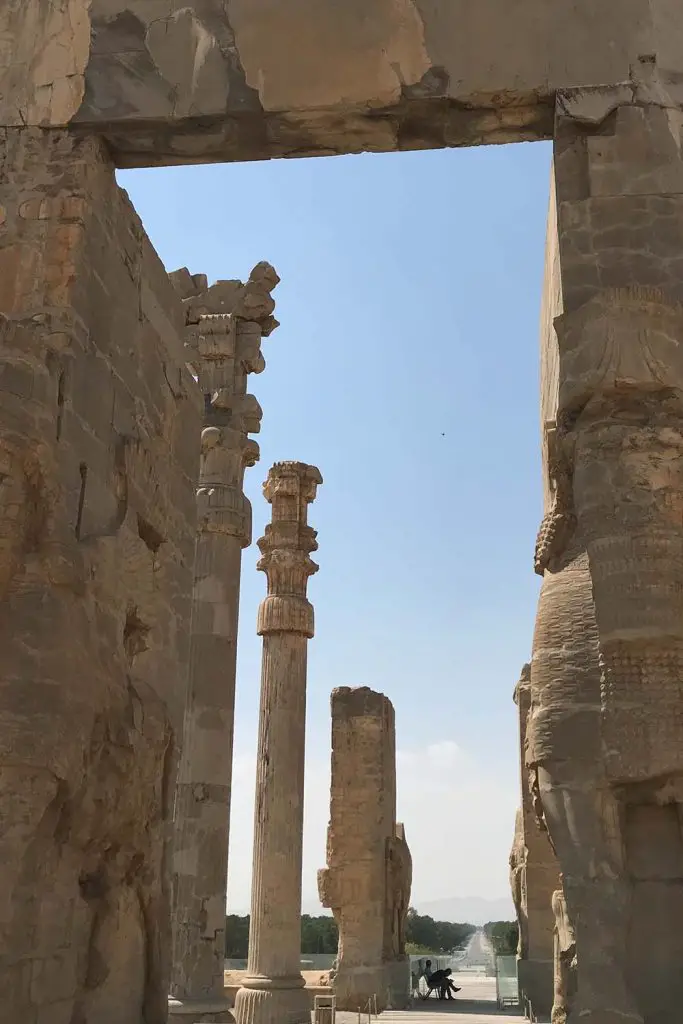Persepolis | Achaemenid Empire, 530 BC
It wasn’t until around 2,000 years after Ancient Egypt that the next set of great civilizations really began to flourish. Around the end of the 6th Century BC, the Greek and Persian empires ballooned into the earth’s controlling states and engaged in a series of epic battles referred to as the Greco-Persian Wars. Known as the Achaemenid Empire during this period, the Persians built several important cities including Persepolis, which became the ceremonial capital.
Left: Embossed soldiers on one of the staircases in Persepolis & Right: Lion hunting a bull carving in Persepolis
It is thought that while the founder of the Achaemenid Empire, Cyrus the Great chose the location, it was Darius the Great—the 3rd King of Kings—who built the earliest structures that remain today. Persepolis consists of a platform with several palaces that contain sets of beautifully crafted Persian columns and is one of the best examples of Achaemenid architecture. The Gate of All Nations sits inside Persepolis and was built by Darius the Great’s successor Xerxes I.
Excuse me! Are you on Pinterest?! Here are a couple of pins!
Gallery
This post is part of an expanded series taken from 37 Wonders of the World in Chronological Order. You can click the link to read more, watch the video or navigate between individual posts beneath the gallery. Enjoy!
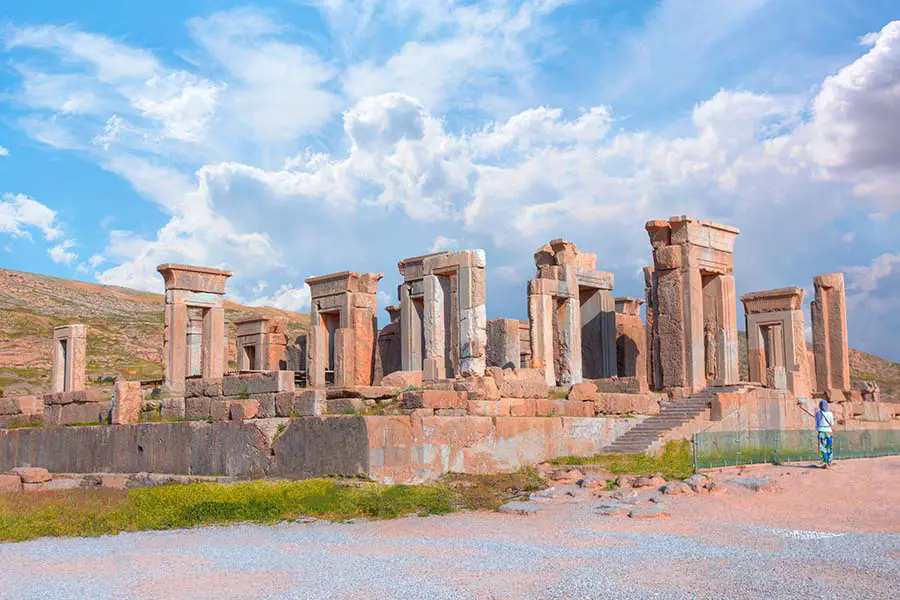
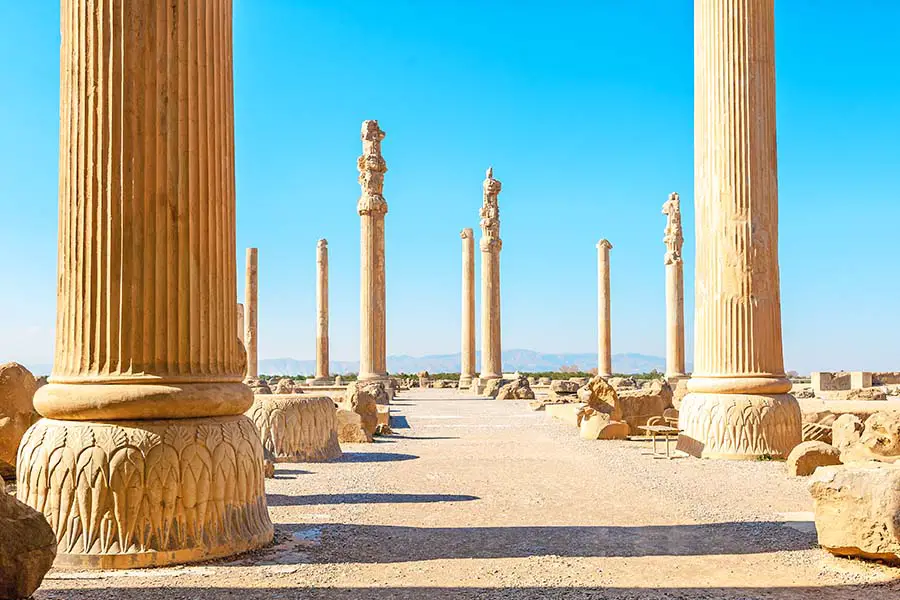
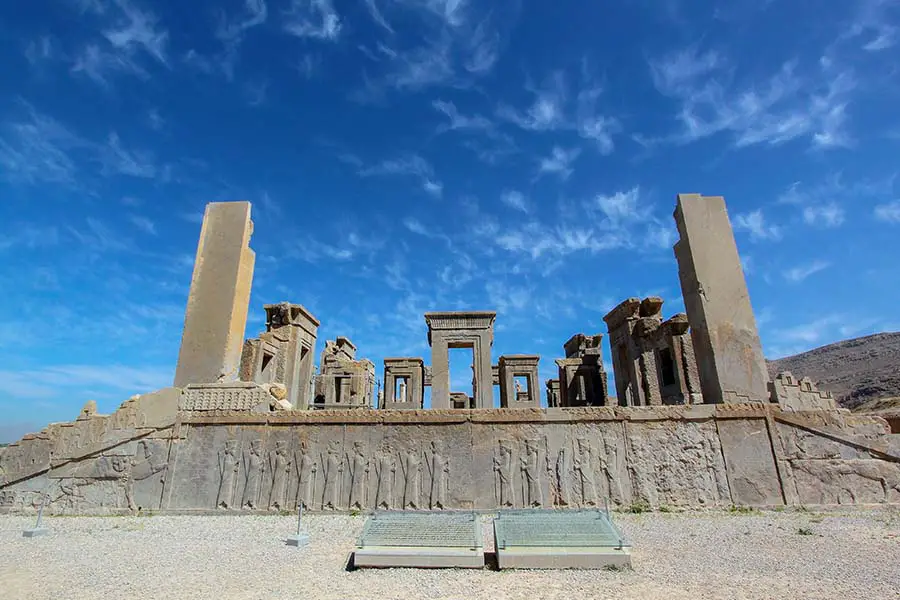
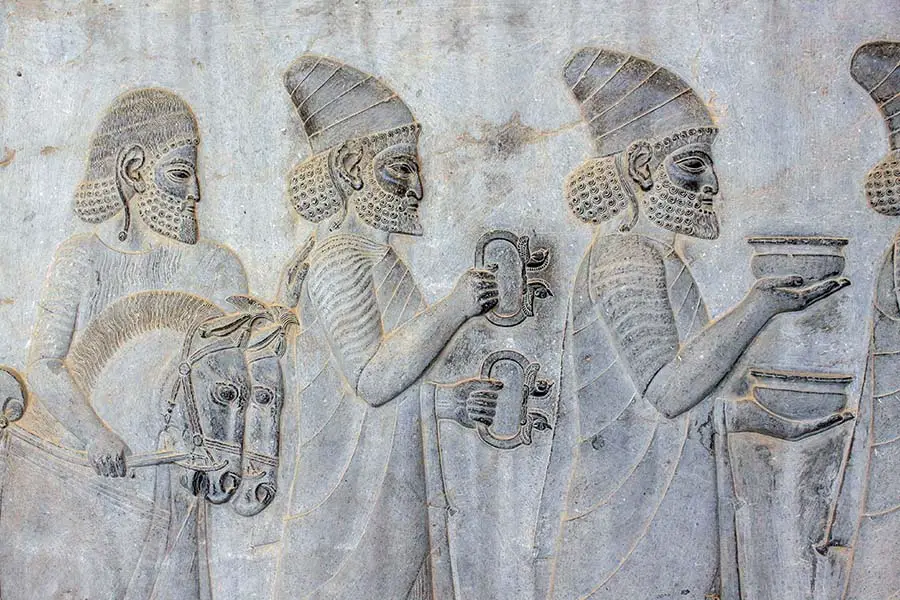
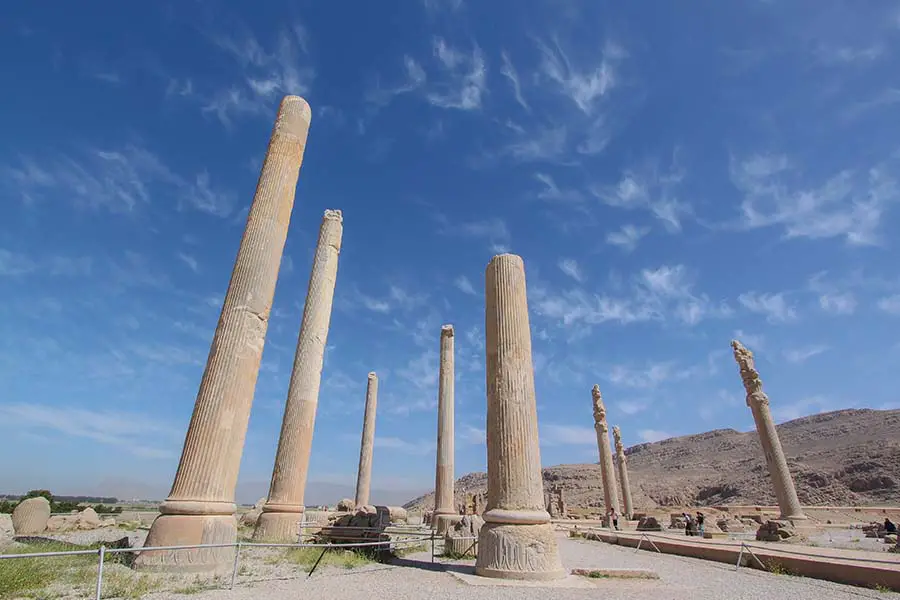

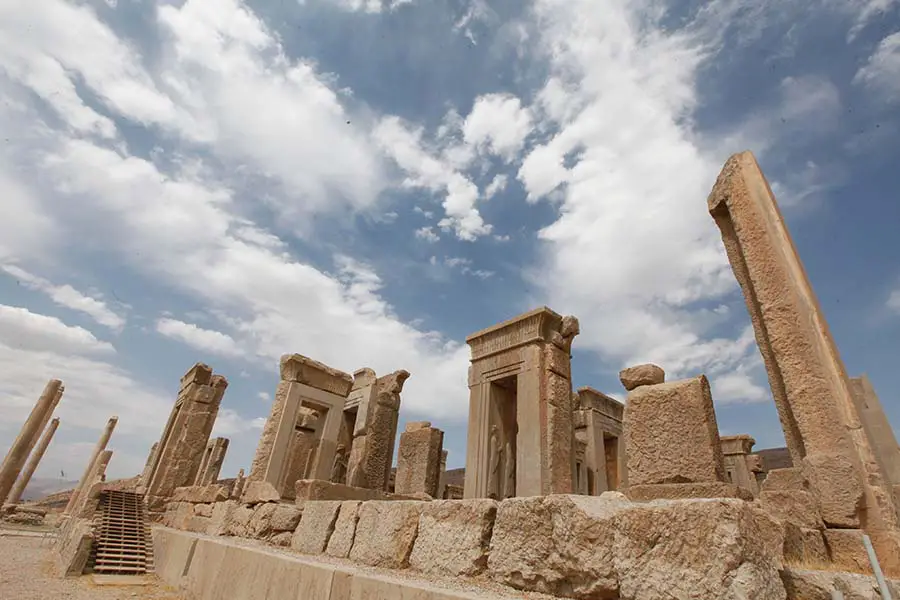
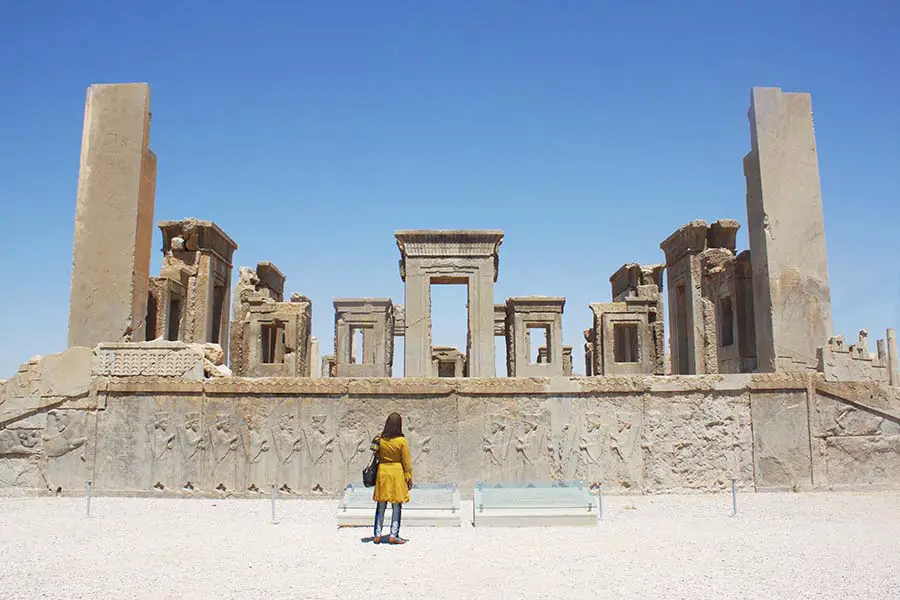
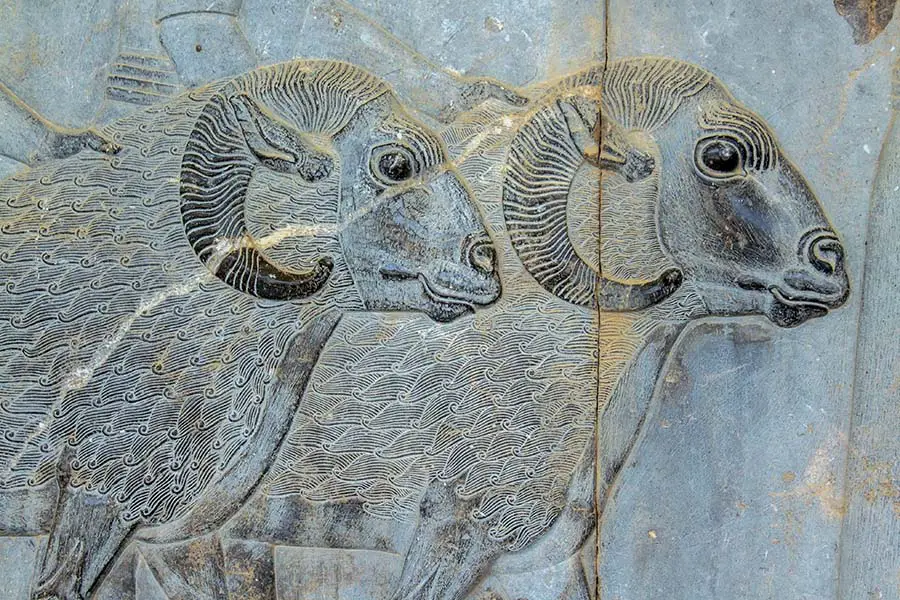
Left: amirabbas fanaei on Unsplash & Right: Sina Moradbakhti on Unsplash
